Charles Harold Moore was a champion one-legged swimmer in the Victorian period. Moore began using the title of champion after beating another one-legged champion swimmer, William Woodbridge, in a race at Lambeth Baths on 12 November 1857. After this time he would frequently challenge any one-legged swimmer to race him for a stake of £25[ref]D Day and M Roberts, Swimming Communities in Victorian England (Palgrave Macmillan, 2019) pp. 48-51.[/ref].
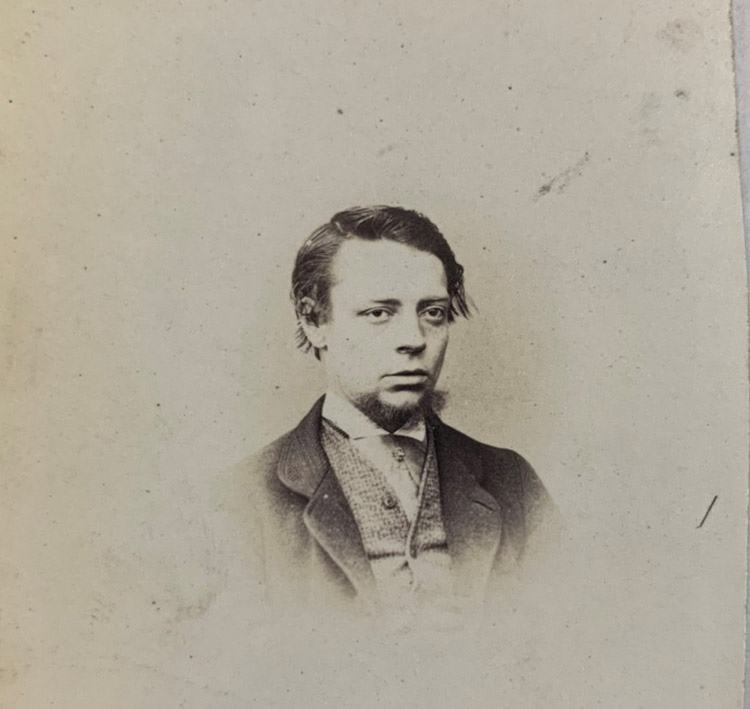
Moore’s early life
It is likely that Charles Harold Moore was born to Charles and Ann Moore around 1832. A record found on FamilySearch shows that he was baptised on 5 June 1832 at the Church of St George in Gravesend. According to the swimming historian Ralph Thomas, Moore lost his leg when he was 11 years old[ref]Manchester Guardian, 6 July 1904, p. 4; R Thomas, Swimming (London, 1904), p. 360.[/ref].

A career in swimming
Moore competed in races throughout the 1860s and 70s, notably beating Fred Cavill, the South Coast champion in a clothed race in 1873[ref]R Thomas, Swimming, p. 364.[/ref]. Working as a swimming teacher at the Endell Street and Wenlock Baths in London, Moore taught the likes of Harry Gurr, another renowned Victorian swimmer[ref]The Penny Illustrated Paper, 4 September 1875, p. 158.[/ref]. Moore was also considered one of the best ornamental swimmers of the period; newspaper articles detail the frequent swim galas and annual benefits, where Moore would regularly race or perform displays of ornamental swimming.
Details from the programme for Moore’s 10th annual benefit on 7 September 1869 at the Wenlock Bath on City Road show that Moore encouraged people to try competitive swimming. A 120-yard race was put together for ‘boys under 14 years of age, who have never won a prize’: and another one for ‘one-legged and one-armed swimmers who have never won a prize’. In addition, the programme included a ‘grand display of ornamental swimming by C. Moore’ assisted by a number of swimmers, including ‘Professor Moore’s pupils’. There was also ‘an exposition by Professor Moore and Mr Smith of the best method of saving a drowning man’[ref]Bell’s Life in London, 28 August 1869, p. 7.[/ref].

Recent scholarship by Dave Day and Margaret Roberts has shown the importance of individual entrepreneurs for the increased popularity of swimming in the Victorian period. These individuals often took the title of ‘professor’, and would perform tricks in the water, challenge other professors to races, administrate races, and act as swimming instructors. Swimming galas could draw in significant crowds of spectators and the individuals – acting as both athletes and performers – could become very well-known[ref]See: Day and Roberts, Swimming Communities.[/ref].
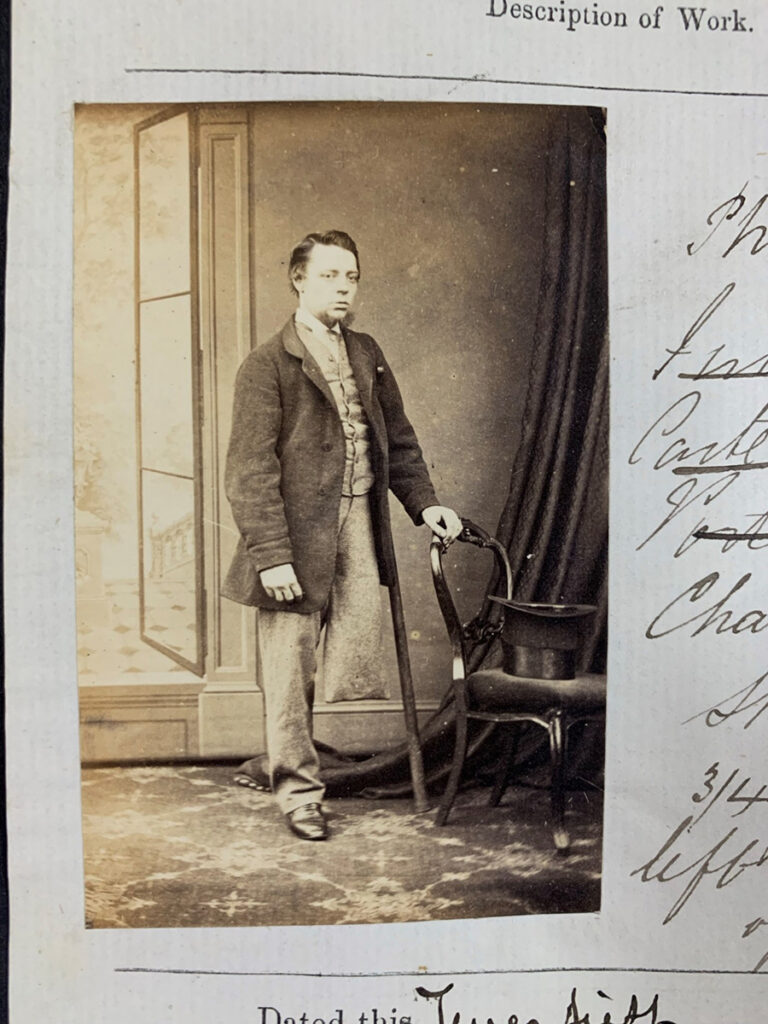
The National Archives holds photographs of Charles Moore in our Copyright collection. Four photographs were registered for copyright by John Frederick Timms in 1865, at the height of Moore’s fame. Individuals registering images for copyright tended to do so for commercial reasons, so it is possible that these photographs were reproduced for sale outside baths.
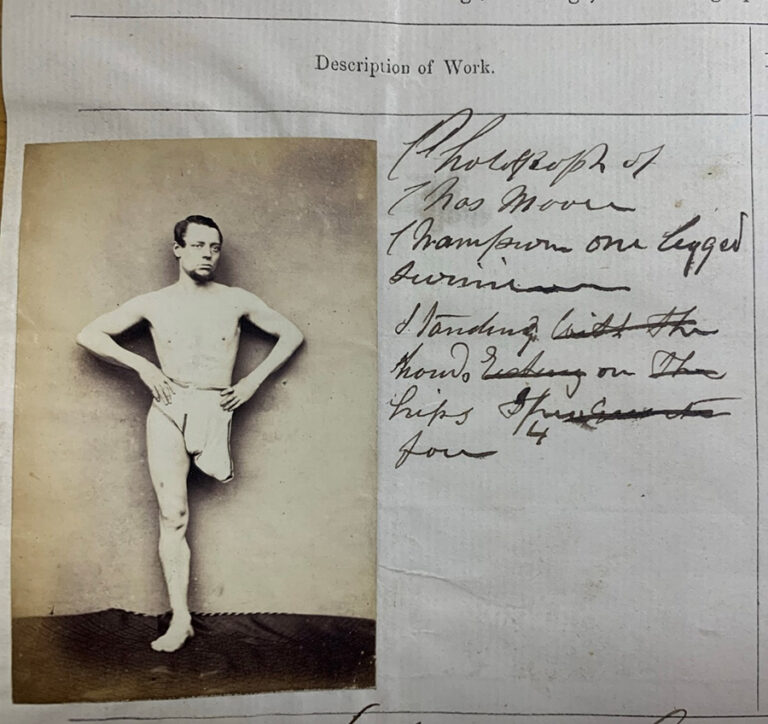
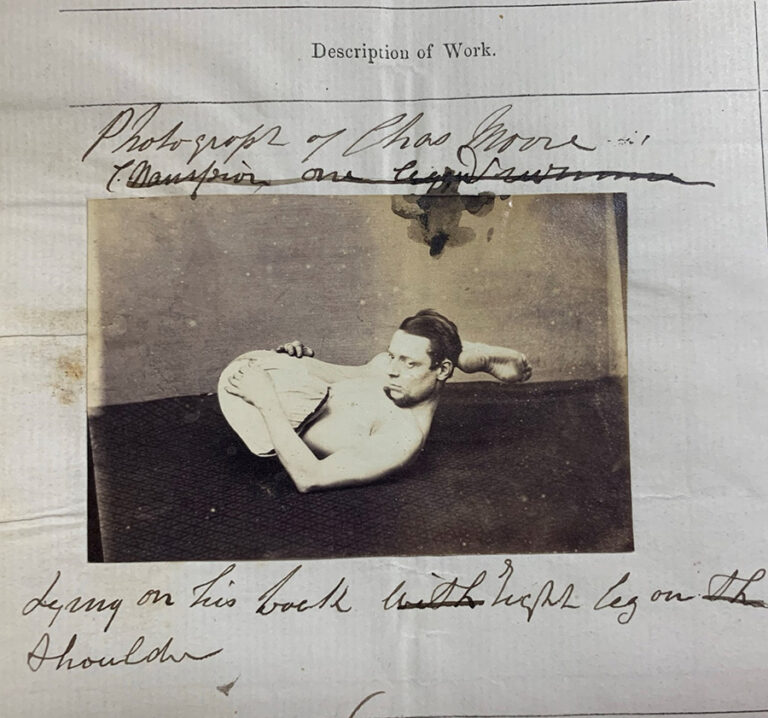
Charles was also depicted in an illustration of ‘Metropolitan Swimming Celebrities’ that appeared in an issue of London Society in 1866 – an illustrated monthly periodical[ref]London Society: An Illustrated Magazine of Light and Amusing Literature for the Hours of Relaxation, Vol. 10 (1866), p. 50.[/ref].

Charles and his family
In November 1859 Charles Moore and Ellen O’Brien gave legal notice of their intention to marry, and the 1861 census shows them living at 4 Short’s Gardens in St. Giles as husband and wife, with Charles’ occupation as a ‘Professional Swimmer’[ref]The National Archives, 1861 Census, RG 9/168/37/3/16. Available on Ancestry.[/ref]. However, it was not until 12 November 1867 that the couple officially married[ref]London Metropolitan Archives, London Church of England Parish Registers, ‘Charles Harold Moore’, P85/MRY1/446, 12 November 1867.[/ref]. They went on to have at least two children, Charles (born around 1868) and Mary Ann (born around 1870).
The 1871 census records Charles, now aged 38, living at 21 Endell Street in the Parish of St. Giles with his wife and two children – Charles, aged 3, and Mary, aged 1. Charles’ profession is recorded as ‘Bath Attendant’[ref]The National Archives, 1871 Census, RG 10/343/16/25/148. Available on Ancestry.[/ref].
Unfortunately Moore had periods of illness, which meant he was not always able to earn a living from swimming. Workhouse admission and discharge registers held at the London Metropolitan Archives and found digitised on Ancestry indicate that Moore and his family had no choice but to spend time in and out of the workhouse. An entry from 5 August 1879 shows that Ellen and the children were admitted to Broad Street Workhouse in the parish of St. Giles and Bloomsbury Parish Union. Ellen is listed as the ‘w[ife] of teacher of swimming’. The following day there is an entry recording that their daughter, Mary Ann, was discharged to Edmonton School[ref]London Metropolitan Archives, London Workhouse Admission and Discharge Records, 1764-1930, ‘Ellen Moore’, HOBG/535/11 (1878-1879), 5 August 1879.[/ref].

Charles was also unable to avoid the workhouse and he was admitted to Broad Street Workhouse on multiple occasions, including 8 February 1879 and again on 30 April 1880. The admission registers list him as a ‘Professor of Swimming’.

Moore was a respected professor of swimming and was celebrated in his time; an article in Sporting Life (September 1881) advertised a subscription for the purpose of raising money to get him out of the workhouse. The article states that Moore was suffering from a ‘long and painful illness’ but noted that he had held the position of champion of one-legged swimmer for a period of 23 years[ref]Sporting Life, 22 September 1881, p.4.[/ref].
By the time of the 1891 census we find Charles, around age 57, working as a street hawker, living with his wife and daughter in Short’s Gardens.

We find a description of Moore from this period of his life in Charles Sprawson’s quirky cult classic book The Haunts of the Black Masseur: The Swimmer as Hero:
‘As you turn out of the Strand, on the far right of the road leading to Waterloo Bridge, a man may be seen seated on a chair, not begging, but offering for sale matches. He is much altered in his appearance, but a close inspection reveals the once well-known features of Charley Moore. Swimmers might do very much worse than extend their pity and pecuniary assistance to a man whose name once upon a time was indeed a household word, and whose distress appeals very forcibly to their charity.’[ref]C Sprawson, The Haunts of the Black Masseur: The Swimmer as Hero (first published 1992; Kindle Edition), p. 268.[/ref]
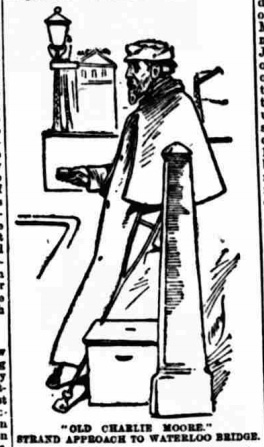
An illustration of Moore selling matches on Waterloo Bridge appeared in The People on 7 February 1897. The accompanying article relayed that Moore had been a familiar figure on the Wellington Street approach for the past 12 years but that many readers would not know he used to be ‘at one time the champion swimmer of England and also held the post of swimming-master at the Endell-st Baths’. Sadly, rheumatism was given as the reason for the ‘bottom of all “Old Charlie’s” troubles’, which ‘eventually landed him on the wooden box which supports his rheumatically-racked frame’[ref]‘No.13 – The People’s’ Pals of the Pavement’, The People, 7 February 1897, p. 18.[/ref].
The 1901 census lists Moore, aged 68, as a widower and a ‘matchseller’[ref]The National Archives, 1901 Census, RG 13/237/127/26. Available on Ancestry.[/ref]. And an article from the same year in The Globe gives details of Moore appearing before the Bow Street Magistrate asking for help in locating a solicitor who had approached him about inheriting some money from his brother William Henry Moore, who had died in China around 4 ½ years previously. Moore lamented that ‘I have to get my living selling matches, and my landlord up in Short’s Gardens is threatening to turn me out if I don’t pay the rent’. However, the magistrate told Moore that nothing could be done to help him locate the elusive solicitor[ref]‘A Match Hawker’s Glimpse of a Legacy’, The Globe, 29 April 1901, p. 5.[/ref].
Sadly, Moore was unable to reach financial security through his swimming feats due to illness. Nonetheless, his status within the swimming world was a source of pride throughout his life. The article in The People concluded that ‘for an old gentlemen of 60 odd, he is very cheerful’, and stated that he gladly narrates the story of how he became the ‘proud possessor of the title, “the one-legged champion swimmer of England”’[ref]The People, 7 February 1897, p. 18.[/ref].
How did he lose his leg?
My father’s middle name was Moore, but he died when I was 10, so I’m only learning of his relatives from Ancestry.com. I will look this name up and see if it is a match. Thank you for sending me this information.
Mary W.Grimm
What a tragic but inspiring story of resilience and courage in the face of a society lacking compassion and integrity!
An extremely interesting true life story. With recent films made about female champion swimmers, it is equally good to know there are more people in history, who have dedicated their life to this wonderful sport, overcoming some huge hurdles to perform.
In the 50’s a young man from Ferndale in South Wales swum the Channel with one leg. My niece Melanie Mowlem swum the Channel twice within sight of France but Was swept back by the ebb tide.Her Father “Jack Atlantic “stoker on the Queen Mary was also the Heavyweight Champion of the South Wales Miners so Sport was in the blood.